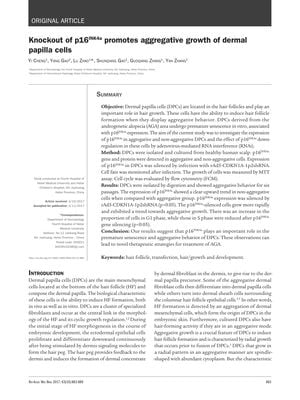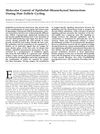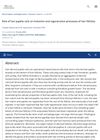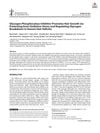Knockout of p16INK4a Promotes Aggregative Growth of Dermal Papilla Cells
October 2017
in “
Revista Da Associacao Medica Brasileira
”

TLDR Removing p16INK4a from skin cells can lead to faster and more clumped growth, which might help with hair growth.
The study from 2017 focused on the impact of p16INK4a on dermal papilla cells (DPCs), which are important for hair follicle development and hair growth. It was found that DPCs from androgenetic alopecia (AGA) patients showed increased p16INK4a expression and premature senescence. By silencing p16INK4a in healthy human scalp-derived DPCs using RNA interference, the cells exhibited more rapid growth and a tendency towards aggregative growth, which is beneficial for hair follicle formation. The silencing also altered the cell cycle, increasing the number of cells in the G1 phase and decreasing those in the S phase. The study concluded that p16INK4a contributes to the premature senescence and non-aggregative behavior of DPCs, suggesting that targeting this gene could be a potential treatment strategy for AGA. However, the number of participants from whom DPCs were derived was not specified in the summary.








